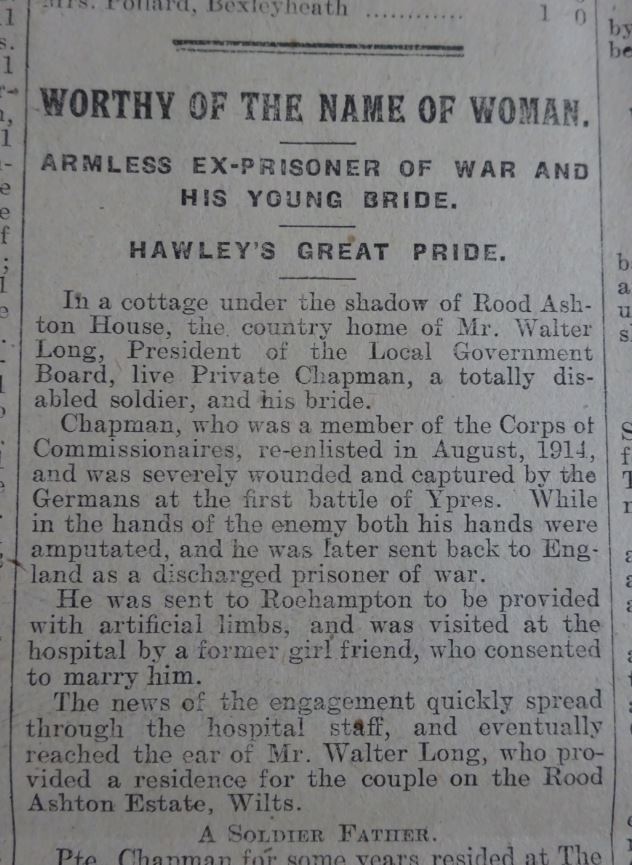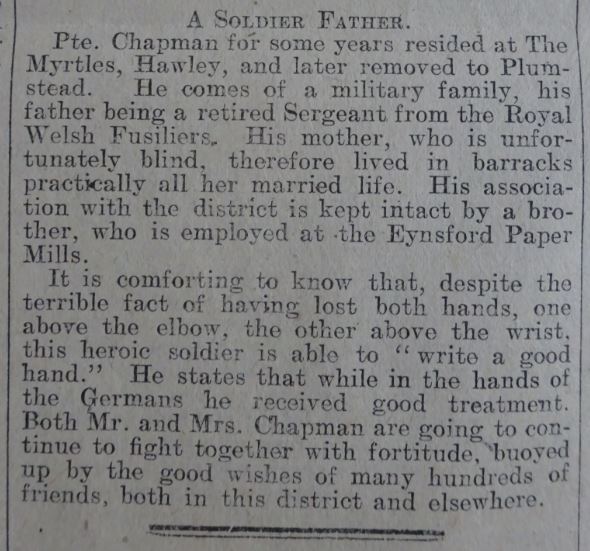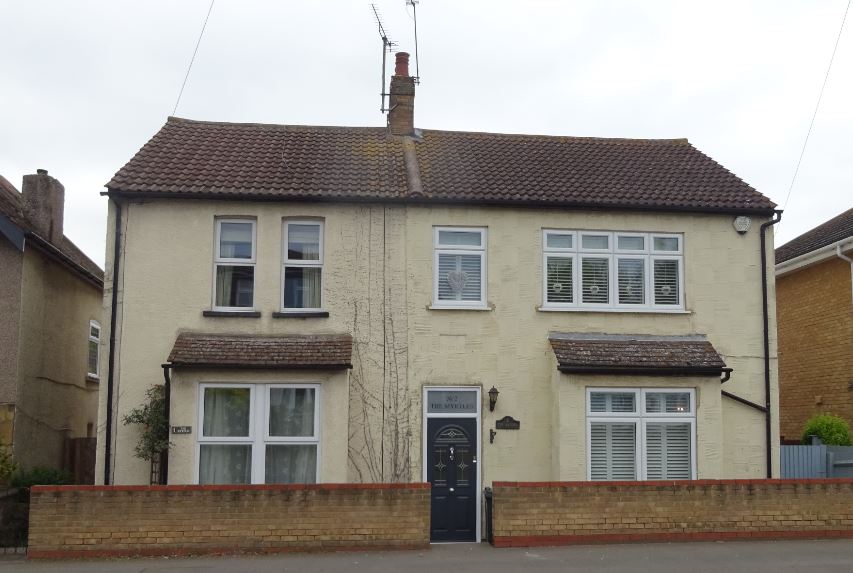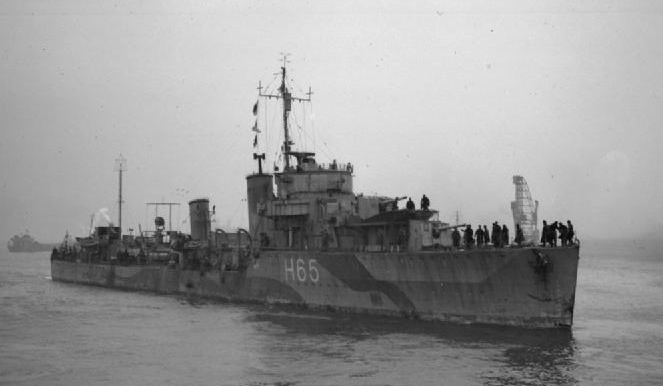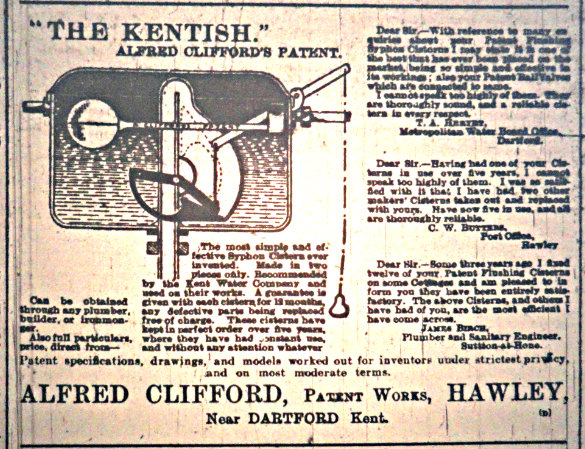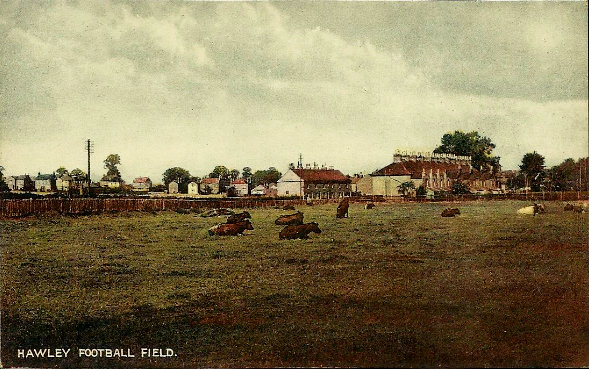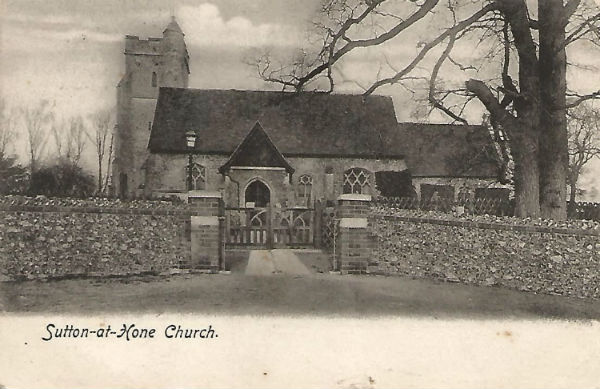The Wellcome Institute has digitised its archive and library and anyone can access the collection online. Amongst the books available online are the Medical Officers’ Reports for Dartford Rural District Council, and these reports contain a variety of statistics on health, births and deaths, vaccinations, housing and food safety.
The housing reports after 1950 contain information about the demolition of housing, including properties in Sutton at Hone, Hawley, South Darenth and Horton Kirby.
In the 1950 report, the only local properties demolished were 5,7 and 9 Devon Road, Sutton at Hone
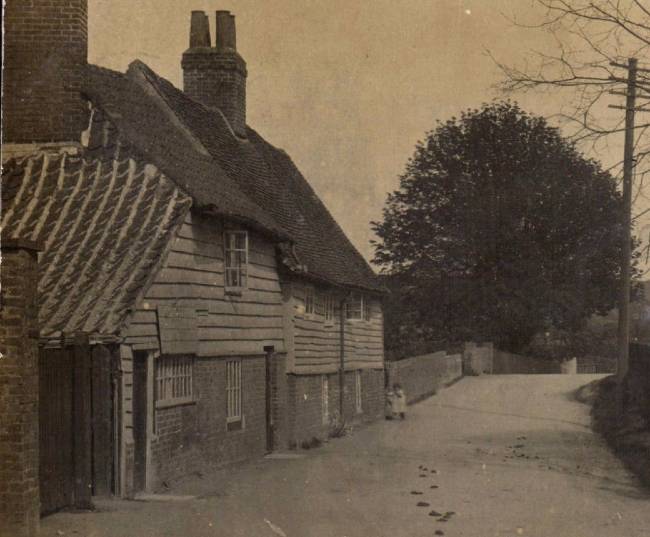
In the 1952 report, the only local properties demolished were Nos 1, 2, 3, 4, 5 and 6 Burnt House Lane, Hawley.
In the 1953 report the only properties demolished were the Mill House, South Darenth, and The Old Gills, South Darenth. Additionally, it was agreed that 42 Main Road, Sutton at Hone would not be used for human habitation.
1954 – Flint Cottage, Old Gills, South Darenth was demolished.
1955 – 48 and 50 Main Road, Sutton at Hone were demolished.
1956 – 2 Main Road, Sutton at Hone was demolished
1957 – Spring Villa, Hawley, 30, 40 & 44 Main Road, Sutton at Hone and 1-4 Days Cottages, Horton Kirby were all issued with demolition orders. 1 – 10 Sharps Row, Horton Kirby had a closure order issued, and 5 Giffords Cottages, South Darenth would no longer be let out.
In 1958, Paddock View, Hawley was demolished in May, and Cedar Lawn Cottage, Sutton at Hone and Well Cottage, Dean Bottom were issued with demolition notices.
1959 saw a number of demolished buildings: a bungalow at the rear of Cromwell Villas, Sutton at Hone; Well Cottage, Dean Bottom; Russell House and 1 & 9 Sharps Row, Horton Kirby and Spring Villa, Hawley Road, Hawley.
1960 saw Cedar Lawn Cottage, Devon Road, Sutton at Hone; 2-8 and 10 Sharps Row, Horton Kirby demolished. Closure orders were issued for 38, 40, 42 and 44 Main Road Sutton at Hone and 2 Poplar Cottages, Horton Kirby.
1961 – 1-4 Days Cottages The Street, Horton Kirby were demolished
1962 – 5 & 6 Days Cottages, The Street and 1 – 8 Kemps Cottages in Horton Kirby were demolished.
1966 – Houses demolished or closed: 5 Giffords Cottage, Horton Road, South Darenth; 1-4 Lombard Cottages, Horton Kirby and 50 Main Road, Sutton at Hone
1967 – Houses demolished or closed: 224 to 230 (even) Main Road, Sutton at Hone
1968 – Houses demolished or closed: 1-4 Bank Houses, Hawley Road, Hawley
1969 – Houses demolished or closed: 50 Main Road, Sutton at Hone
1972 – Demolished – 284 to 306 Main Road, Sutton at Hone
